- A 21st century take on the Bronco
- Ladder frame chassis, low-range box, diff locks
- Not sold in the UK, yet…
Yes, the Ford Bronco is another SUV and no, you can’t officially buy it in the UK. Not the best of starts, but before you click on the review of that lovely new Porsche instead, hear me out, because the Bronco is anything but your everyday Chelsea Tractor.
Haven’t I heard that name before?
Some of our more seasoned readers will no doubt remember the introduction of the original Ford Bronco back in 1966. An relatively cheap, honest off-roader, its original production ran through five generations and ended in 1996.
Fast forward to 2021, and the Bronco has returned to take on the Jeep Wrangler in an area of that market that Ford’s formidable off-road range hasn’t found its way into yet. Same name as before and – broadly – the same styling, too, what with its super-boxy profile, circular headlamps and multitude of body styles and accessories.
In America, the Base trim level (one of eight) costs from $31,300 (about £26,000), while European models – coming in 2023 – are expected to cost significantly more. That means you could import one yourself into the UK, but you’d be better off going to a specialist dealer such as Clive Sutton who lent us our test car. For this, you’re looking at about £73,000 – though you do get a two-year warranty thrown in and the car is fully homologated.
What’s under the skin?
Just like the Wrangler, the Bronco gets a ladder frame chassis for ultimate off-roading ability. But, crucially, independent double wishbone front suspension also makes an appearance meaning that the Bronco delivers passable on-road driving manners. OK, it’s still a world away from the Land Rover Defender (definitely not on a ladder frame chassis) but the Ford’s ride, manoeuvrability and steering feel are all more than good enough for everyday on-road driving.
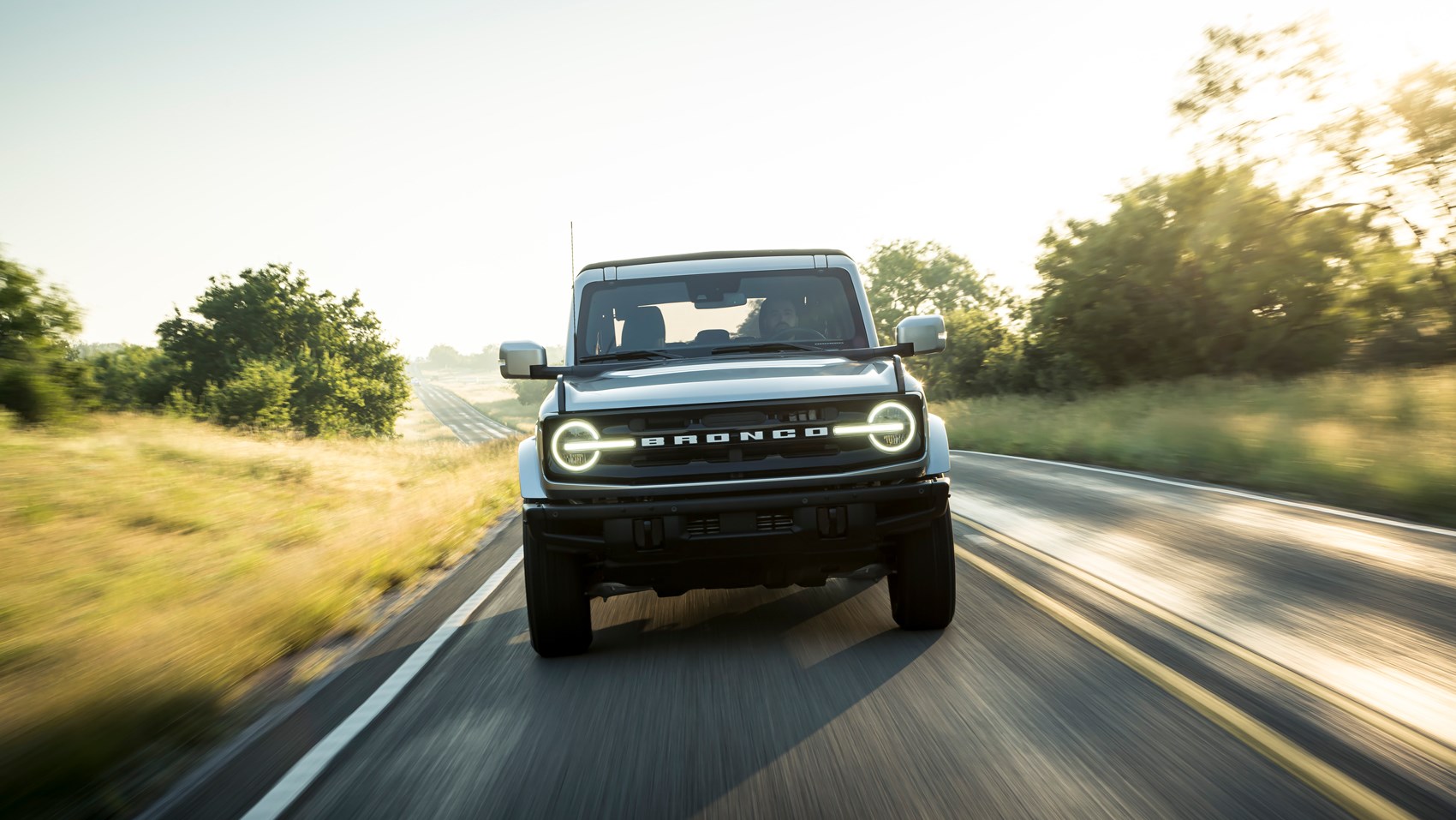
The 2.3-litre four-cylinder Ecoboost engine fitted to our test car isn’t bad either. Delivering 296bhp and 315lb ft of torque, it delivers more than enough pace for an off-road focused vehicle. A 2.7-litre twin-turbo V6 is also available, as is the upcoming Bronco Raptor slated to produce over 400bhp. All engines are available with a 10-speed auto box, while the base 2.3-litre comes as standard with a seven-speed manual.
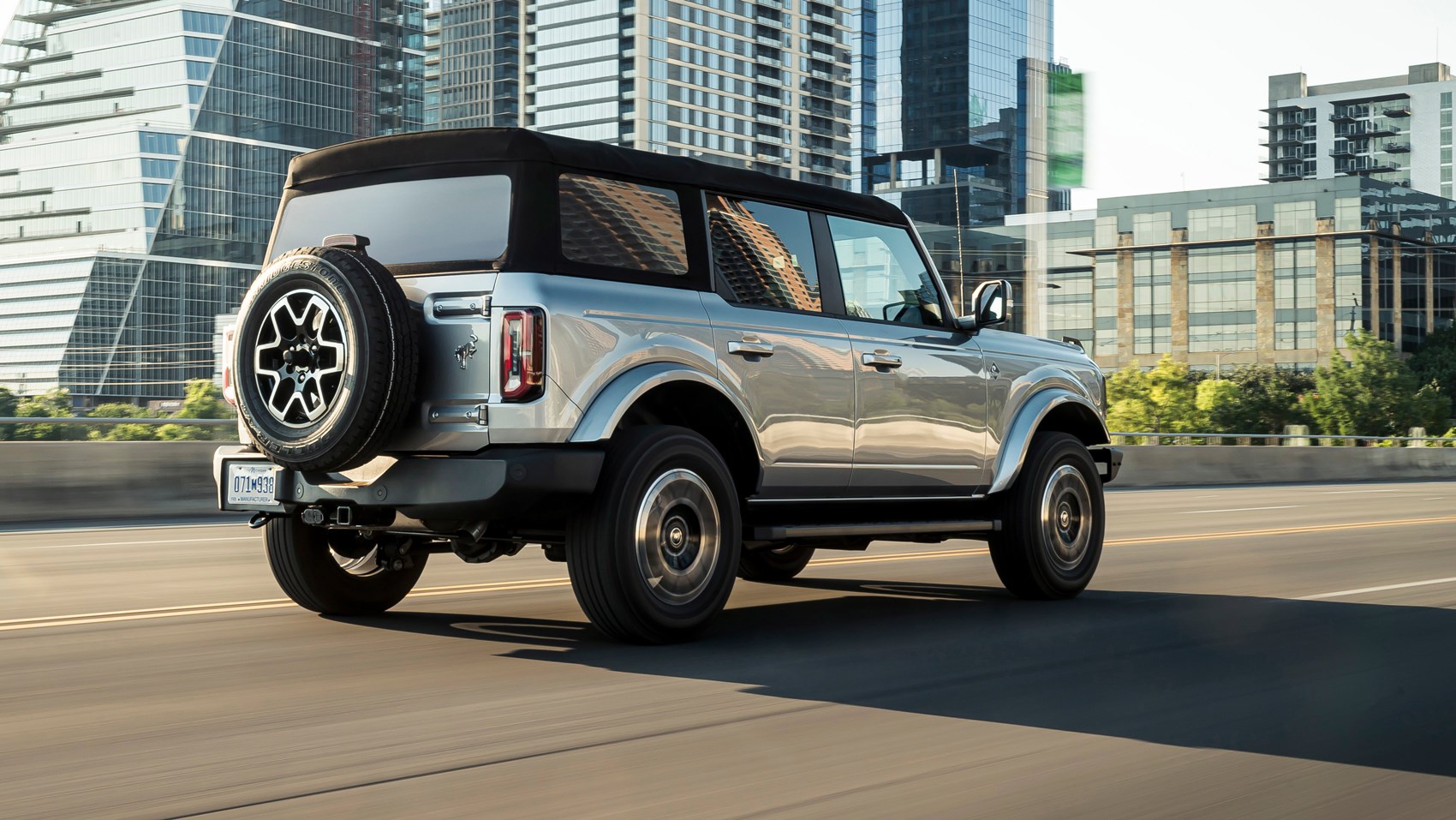
If we had to pick one major issue with the Bronco’s on road refinement, it’s the noise levels on soft-top versions. At first glance, the retractable fabric roof (which, by the way, really needs two people to fully fold back) looks like it doesn’t fit properly and while it does appear watertight the noise generated by the wind is colossal. You can solve this by removing the roof entirely (along with the doors in fact), but that’ll likely be seen as a niche option in the chilly climes of the UK.
What’s the cabin like?
In a word – robust. Even on our mid-spec Outer Banks model, the cabin doesn’t feel particularly plush or premium, yet it’s all the better for it. What with the chunky switchgear and hard-wearing plastics, you wouldn’t think twice about getting it caked in the worst that the great outdoors has to throw at it. Land Rover has gone down a similar road with the Defender, yet there’s no doubt which one you’d least rather ferry around a muddy dog in.
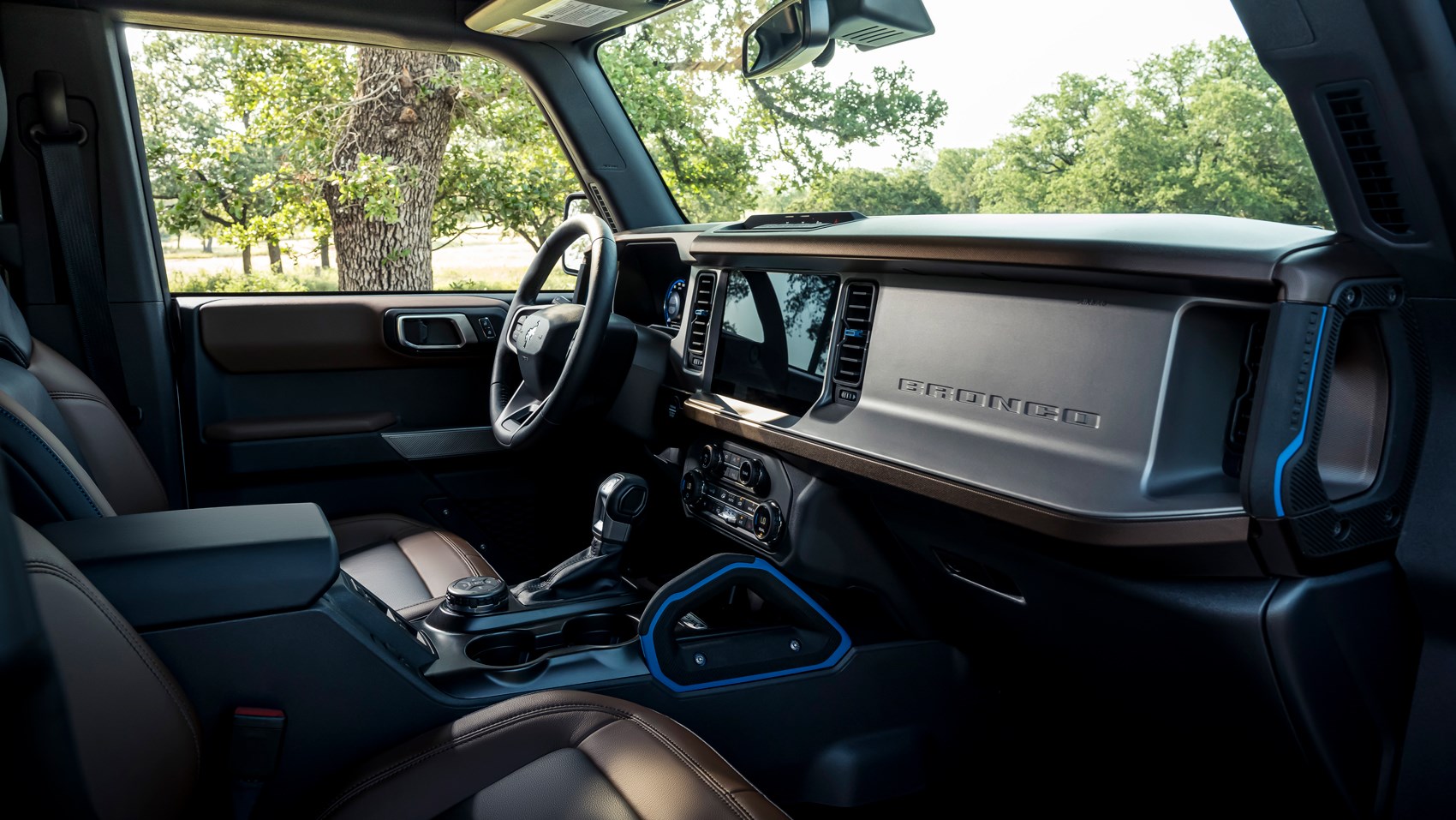
Crucially, though, there’s still luxuries such as Apple CarPlay/Android Auto, climate control and heated seats, while outright space is considerable. Also, despite the car’s near 2.2-metre width (including mirrors), the flat, squared-off bonnet means that placing it on the road is surprisingly easy.
Is it brilliant off-road?
Of course it is. Despite its funky, throwback looks, the Bronco is almost unstoppable when the road runs out. Indeed, the G.O.A.T drive-mode selector (Goes Over Any type of Terrain) features seven different presets – Normal, Eco, Slippery, Sand, Baja, Mud/Ruts and Rock Crawl. Basically, any off-road scenario you can possibly think of barring zero gravity.
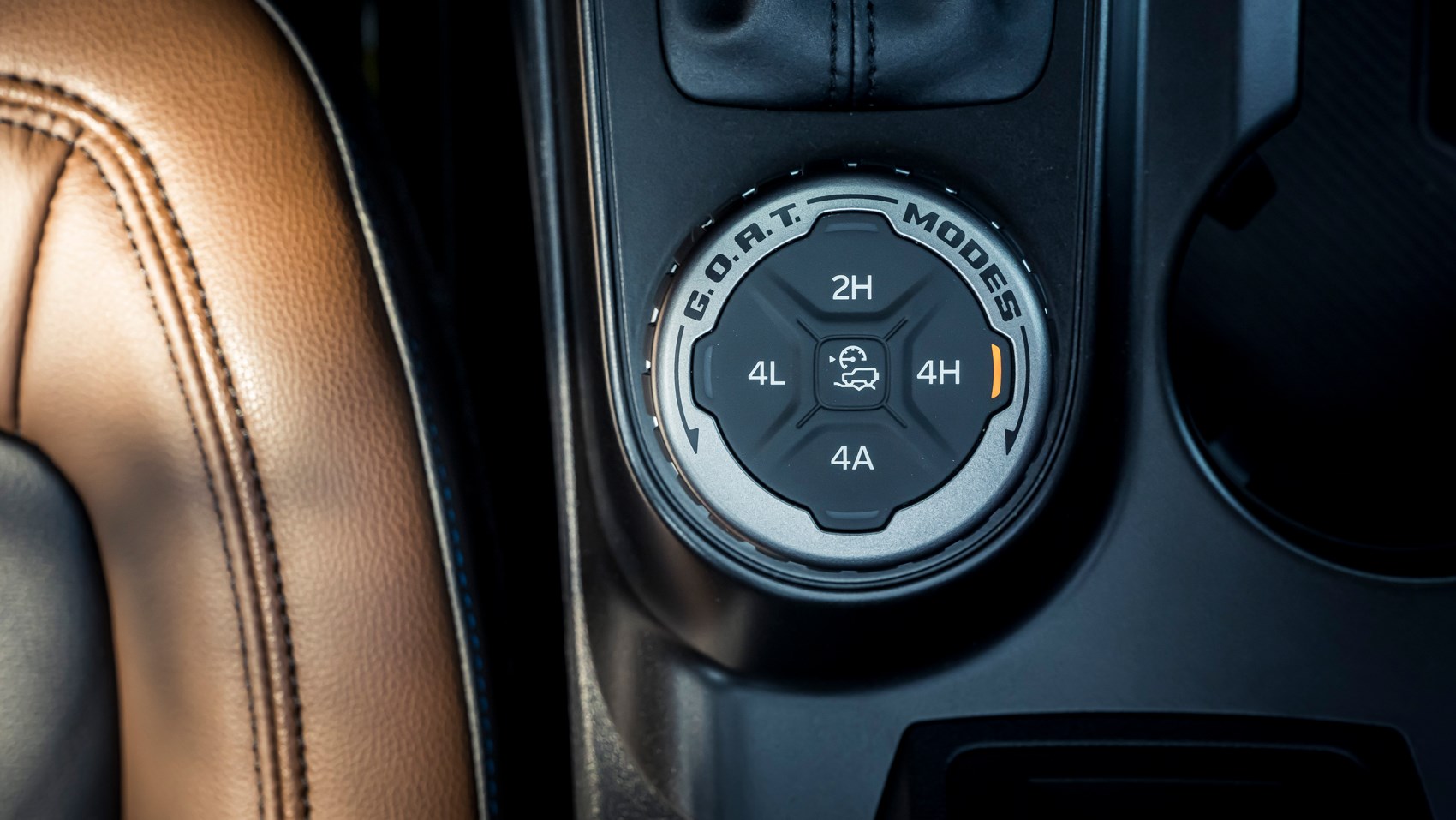
And each mode does feel markedly different, with the Bronco employing its front and rear differential locks and low-range box to help you through most situations. Optional features include front stabiliser bar disconnect for better articulation over large rocks and even remote reservoir dampers on the rear.
The marketing department has excelled themselves with the names of various extras, too. For example, the Sasquatch Package gets 35-inch tyres, electronic-looking front and rear axles, a 4.7 final drive ratio and upgraded Bilstein dampers.
In truth, whatever spec you opt for the Bronco is going to be colossal in the wilds. We spent much of our time with the Bronco charging around a dedicated off-road course and despite it wearing slightly less hardcore tyres, it gave little away to the Wrangler we were comparing it to.
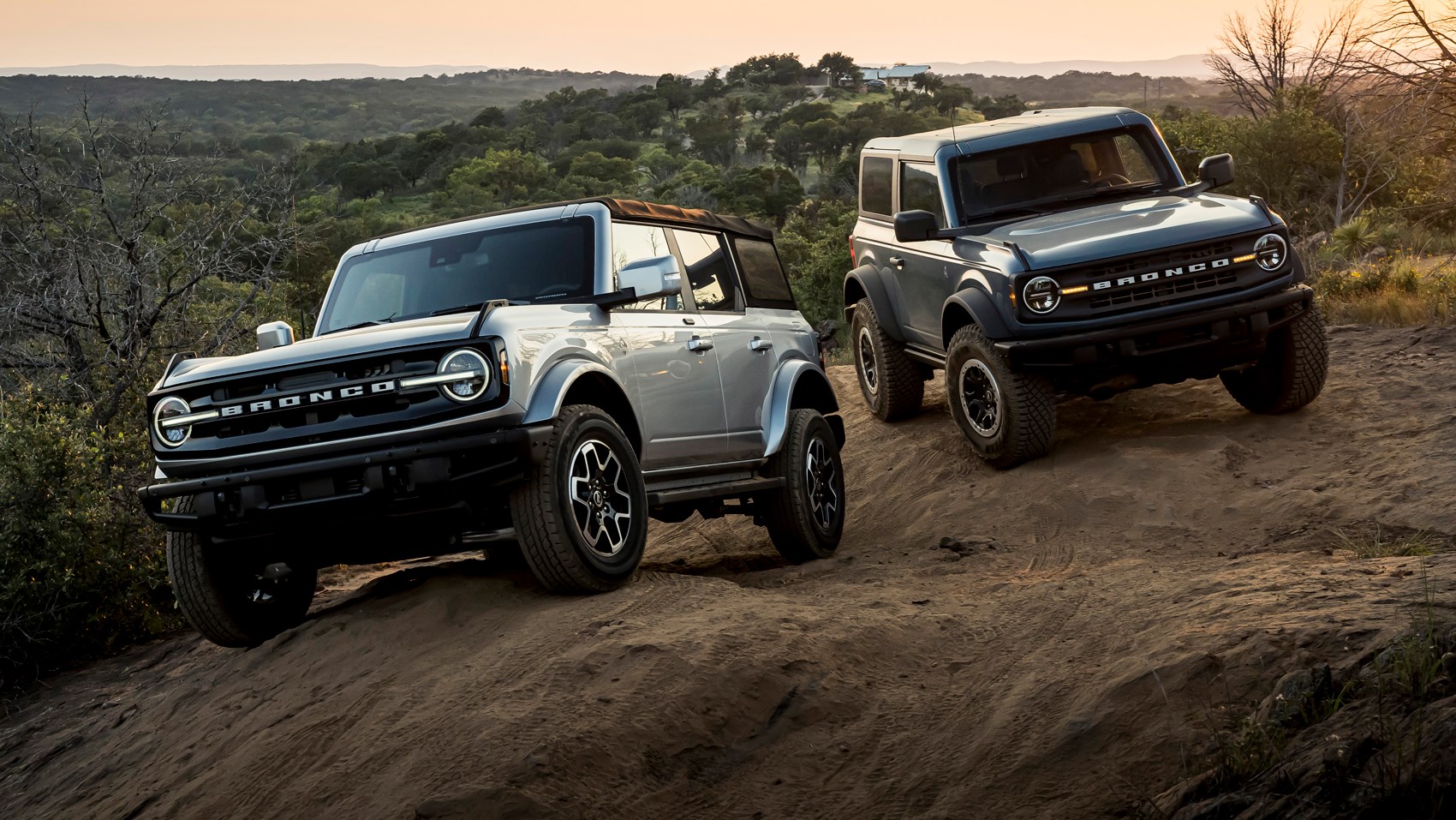
More telling was how much easier it was to drive both off-road and on-road, too, thanks to lighter control weights and stronger driveability. So while it might not have been an exact match to the Wrangler’s off-road ability, it was close enough that you’d be hard-pushed to tell the difference.
Ford Bronco: verdict
It’s easy to say that the Bronco is packed with charm and character in a way that few modern cars are, yet while this is true it doesn’t do justice to the overall package. It treads a fine line between genuine, raw off-roading ability and possessing just enough on-road manners to mean that city dwellers could well consider one purely for its image. Sounds silly, but Land Rover adopted this attitude with the Defender and have been reaping the benefits.
Ford’s decision to not bring the Bronco to the UK is understandable given the poor sales of the Wrangler. But if you have the cash and want something very different with go-anywhere ability then this is it.